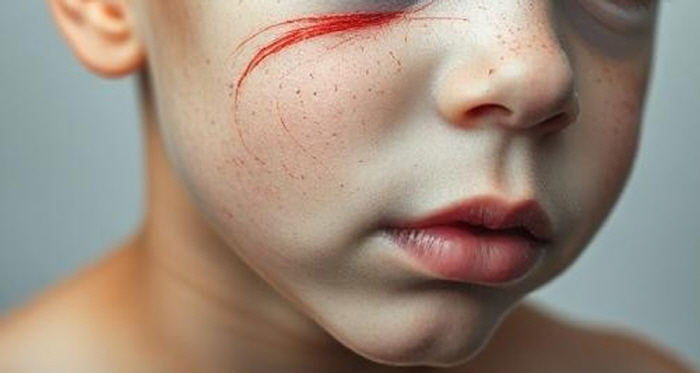What if it leaves a scar? How to deal with a baby's facial wound?
Apr 18, 2025
|
Lacerations are wounds caused by tearing of the skin, and the edges are irregular and uneven, as if tearing paper by hand. It usually occurs by falling or hitting hard objects, and facial lacerations are particularly frequent in young children.
Childhood facial lacerations mainly occur in boys under the age of four, and tend to be concentrated in the forehead area. This is because children have a higher risk of facial damage because they have a higher proportion of their heads and are more active than adults.
Choi Jae-yeon, head of the plastic surgery department at Good Culture Hospital, emphasized the following emergency measures, saying, `It is important to deal with lacerations quickly because they can lead to scars if they miss the timing of suturing.' First, it is wound cleaning. The risk of infection should be reduced by washing the wound with clean running water. If foreign substances such as soil or asphalt remain, it may be difficult to seal immediately even in hospitals.
Second, hemostasis is needed. You should stop the bleeding by pressing the wound with a clean gauze or towel. Children have low blood volume, so even small bleeding can be dangerous.
Third, it is necessary to maintain wetness. You should come to the hospital wrapped in a wet band to prevent the wound from drying out. When the wound dries, the cells can be damaged and the scar can become worse.
Upon arrival at the hospital, most lacerations are sutured through local anesthesia. Usually, it can be sutured in about 10 to 20 minutes, and depending on the depth or extent of the wound, the skin layer, subcutaneous layer, and muscle layer are precisely sutured for each layer. If the child is too young to cooperate, treatment may be performed under sleep anesthesia. However, sleep anesthesia should be preceded by fasting for at least 6 hours, so be careful about food intake before visiting the hospital.
Steady follow-up care is important even after lacerating suture.
First, be careful not to touch or scratch the suture site by hand, and keep the wound from contacting water. In addition, disinfect thoroughly every day and be careful not to dry out blood at the suture site. The timing of removing the thread varies depending on the area, but in general, the face must be removed within five to seven days to minimize scarring. Even after removing the thread, it is recommended to attach a tape or band to hold the wound for about two to three months to prevent the scar from opening.
Director Choi Jae-yeon said, `In the event of a laceration, do not panic, but visit the hospital quickly along with accurate first aid is of paramount importance"If you don't miss the timing of treatment, you can minimize the scarring."
|
This article was translated by Naver AI translator.















